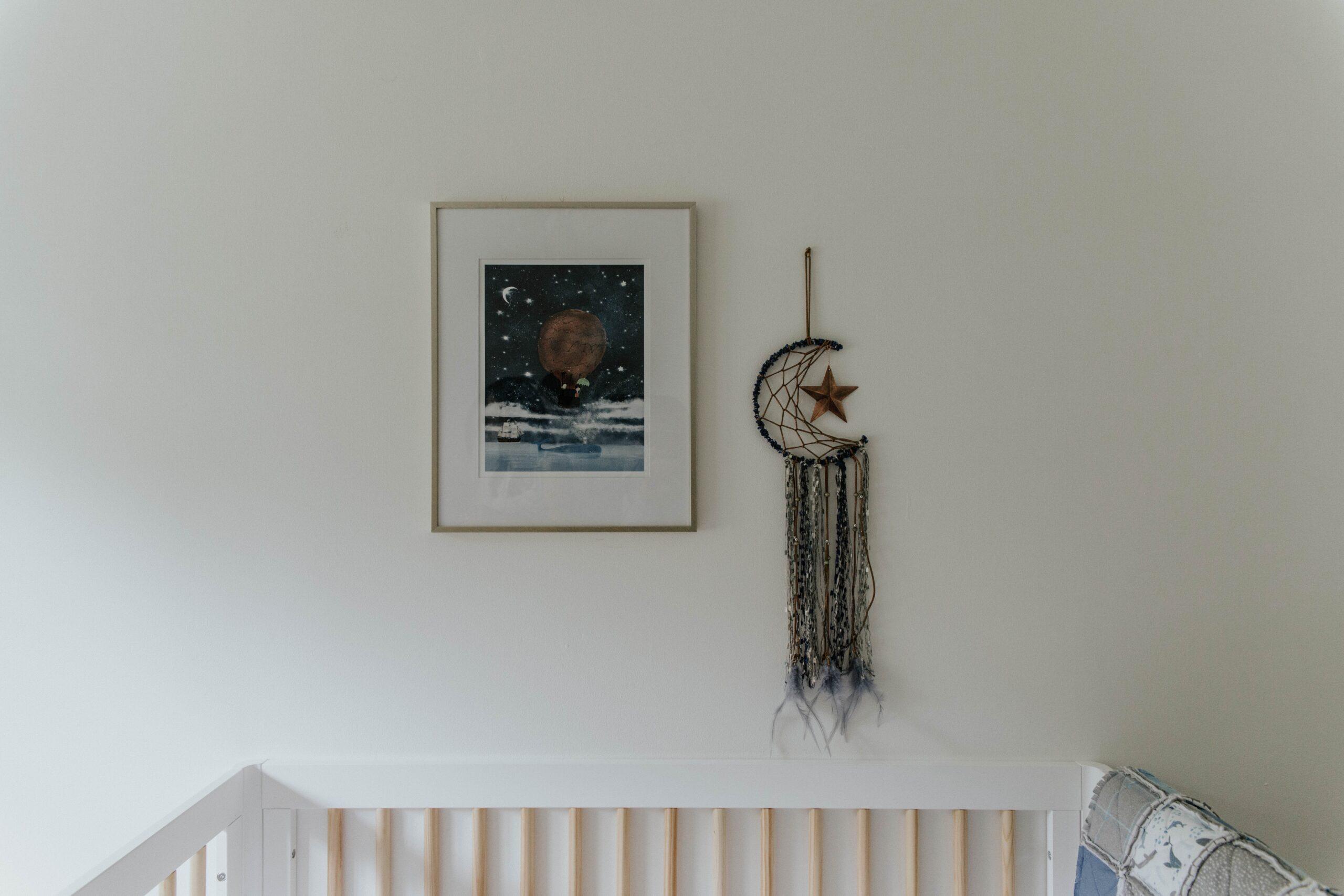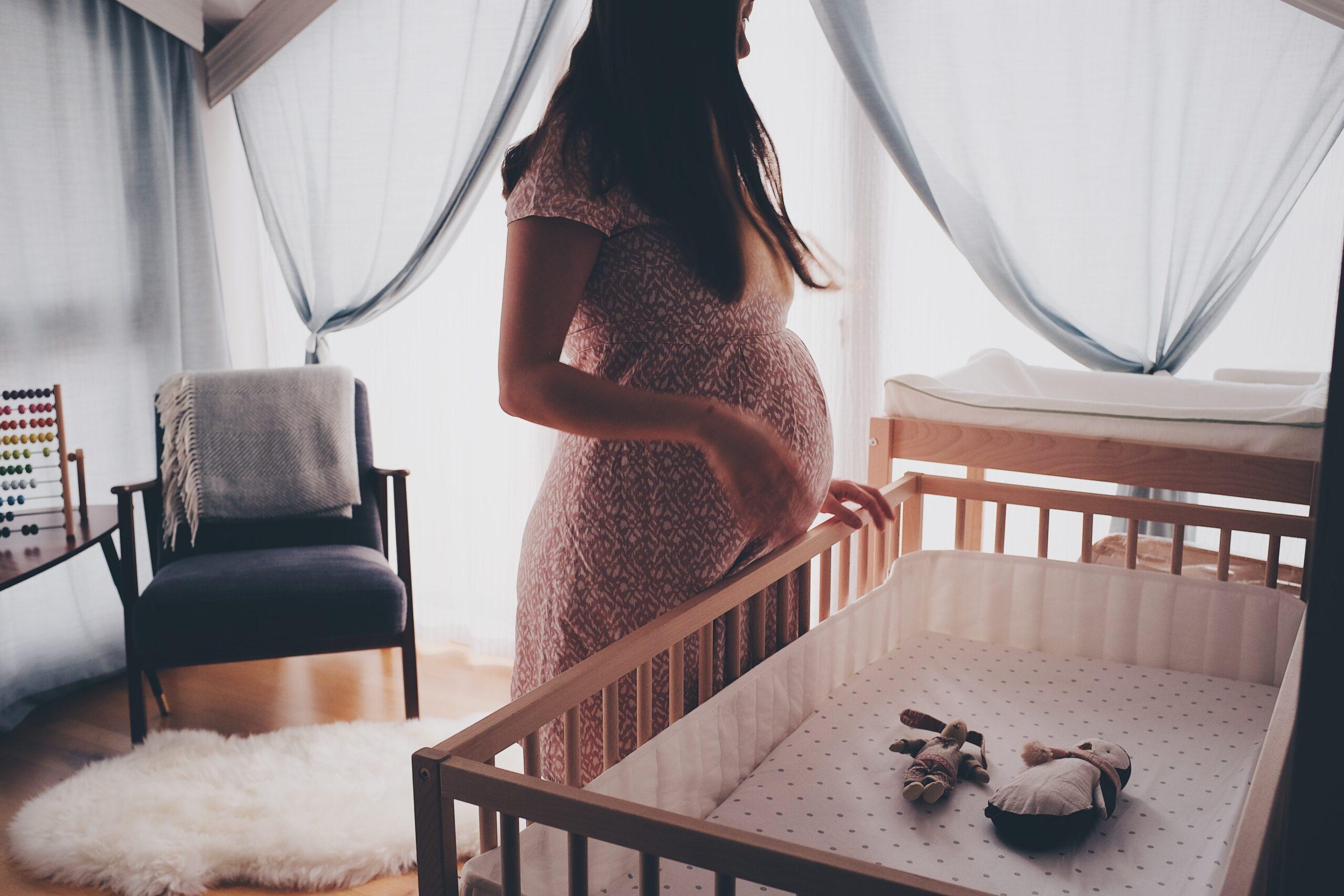Pastels or primary colors? Cartoon characters, teddy bears or moon and stars? Walk into any retailer of baby furniture and decor, and it is very easy to become overwhelmed – there are more choices than ever when it comes to decorating your child’s domain. But how do you choose what is going to work for your child and your budget?
A great trend in design these days is to create a room for your child that will be easily changed as they age, growing along with them. Many parents are choosing to forego the traditional baby-themed room in favor of a room with a basic, classic scheme that can be accented with easily changeable age-related items.
Conversion Furniture
One way to create an adaptable children’s room is to use multi-purpose furniture in place of the traditional crib, changing table and baby dresser suite. Belinda Waldron of Belinda M. Waldron Designs of Oklahoma City recommends using an armoire in place of a dresser for your baby. This piece can be used to store clothes for your baby, and then as your child ages, it can be used to house a television or even a computer. For an older child, Belinda recommends a sleigh bed with a space-saving trundle, which can be later used as a double bed for your child or an extra guest bed.
“Conversion furniture is a wonderful investment,” agrees Ann McGaha of StorkLand and Kids Too! (www.storkland.com). This furniture can cost a little more up front, but in the long run you will save by not having to buy additional pieces to replace those that were outgrown. The wide range of colors and finishes in conversion furniture makes it a great choice that will fit in any decor.
“You can use a regular dresser with a contour changing pad in place of a changing table,” according to Bobbie Faulkner of the Baby Depot at Burlington. This saves you from having to buy a separate piece that will only be used for a short time. Bobbie also feels that conversion beds are great for your last or only child, when you know that you will not need to use that crib for another baby.
Keep Rooms Classic
Using classic colors in your child’s room will also prevent the need to change it often. Painting the walls with a cartoon character mural in bright colors may be appealing now, but as your child grows, the paint scheme will need to be changed to meet their growing tastes. Belinda recommends “subtle colors that don’t overpower,” and finishing items such as wooden blinds or plantation shutters that have a long life. She also thinks subtle strips – either painted or wallpapers – are a good choice.
Antiques and heirloom items are also growing in popularity in children’s furniture. Bobbie has spoken to many parents who wish to use the crib that is handed down in their family, or the dresser that Grandma had. If you like the look and feel of antiques but do not have your own family heirlooms, Belinda recommends checking out antique malls for smaller items such as chairs or occasional tables that can be refinished.
Soft Furnishing
To add that punch of color or touch of whimsy to your classic room, soft furnishings such as draperies and linens, pillows and toys, throw rugs and small upholstered pieces can be changed easily. If you are really stuck on having a baby theme in your child’s room but know that you also want to keep it classic, soft furnishings are the answer.
Curtains and draperies are an easy way to change the face of a room, according to Belinda. Combined with basic wooden shutters or blinds, a bright fabric swag can change the feelings easily and inexpensively.
Ann has noticed that there are many trends in children’s bedding – such as animal prints, toile and luxury fabrics for girls; transportation, cowboy and sports for boys. If you want to remain neutral, soft fabrics in shades of blue are a good choice, according to Bobbie.
Consignment shops and upscale resale outlets are also great sources for baby-themed decor items. As these items are not generally used for a long period of time, you can find a great selection of items in good shape.
Safety and other Considerations
The most important item to consider when designing your child’s domain is safety, and that cannot be stressed enough. Belinda, Ann and Bobbie all emphasized the importance of safety above all other considerations. Here are some basic safety guidelines:
- Furniture finishes should be nontoxic and free from chips or splinters.
- Ensure that antique items (such as cribs) meet current federal safety guidelines for children before using them.
- Items that can be tipped over easily should be anchored to the wall.
- Be aware of safety recalls on all items.
- On window treatments, keep any cords or strings and drapery out of reach of small hands.
- Ensure buttons or decorations on upholstered items, pillows, bedding, toys, etc., are secure and do not present a choking hazard.
Additionally, Belinda recommends using a classic theme that will last a long time, and shopping places known for good quality furnishing. Ann recommends asking your salespeople a lot of questions so you can make the most informed decisions, and being prepared in advance (at least a month prior to your due date) to ensure the items you want will be ready when you need them. Bobbie recommends having fun with the decorating process and using a checklist to focus your search.
Decorating your home can be intimidating – there are so many choices out there! But if you focus on creating a room that will be comfortable for your child as they get older, a classic room with lots of personal touches can be enjoyed for years to come.


